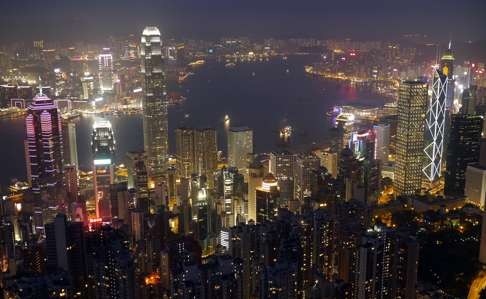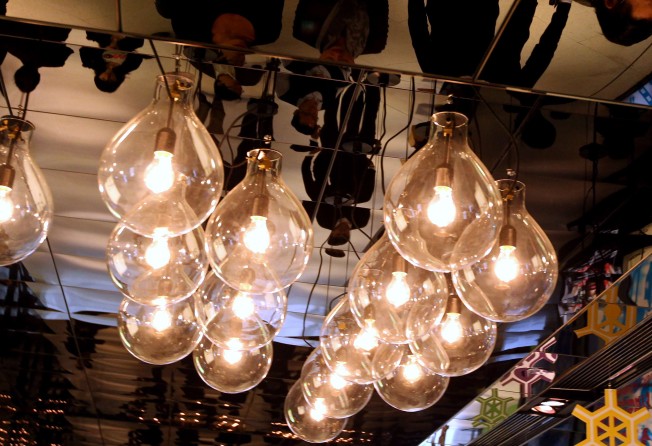
Hong Kong’s power firms must invest greater sums in making customers’ energy use more efficient, WWF says
Green group calls on government and city’s two power providers to set aside a fixed percentage of funds to invest in increasing efficiency

A green group is calling on the government and two power companies to set aside a fixed percentage of funds to invest in making energy use more efficient.
A WWF-Hong Kong research report estimated CLP Power and HK Electric to be spending just 0.04 per cent of their turnover each year on “demand-side management”.
This was a level on par with some of the poorest performing American states such as Wyoming and West Virginia. American power companies collectively spend at least 1.09 per cent of revenues, the report said.
The study compared the energy efficiency expenditures of governments and power companies in the United States – California specifically – and Hong Kong.
It will be submitted to the government as part of a public engagement exercise that ends today to seek views on climate change. It is understood new emissions targets are to be unveiled by the end of the year.
“This is a way to ensure the government is making enough investments for saving electricity,” said Prentice Koo Wai-muk, WWF assistant manager for climate policy and people. “Their performance is very poor right now. It’s mainly the power companies doing it, but when the government looks at new climate targets, where is the money going to come from?”
Koo said he was “not opposed” to the government including demand-side management investments in the so-called scheme of control it has with the two companies – an agreement that caps their annual returns at 9.99 per cent of net fixed assets. The scheme expires in 2018, but is likely to be renegotiated on slightly different terms.
CLP and HK Electric spent just HK$19 million on energy efficiency schemes in 2014, or HK$2.6 per customer, according to WWF. By contrast, California power supplier Pacific Gas and Electric Company managed HK$479 per customer and still remained profitable, Koo said.

Based on Hong Kong’s 2009 flagship energy efficiency initiative – the HK$450 million Building Energy Efficiency Funding Schemes – the government spends only HK$21.3 per resident, which is just a third of what the US manages per capita.
Given the scheme helped save 180 million kilowatt-hours of electricity per year, WWF calculated that such a programme would cost just 36 to 42 cents per unit over six to seven years, lower than CLP Power’s fuel costs for natural gas, at 85 cents per kWh, and nuclear power, at 50 cents per kWh.
“We feel the Hong Kong government should require the two power companies, when transitioning to more gas-fired plants, to table alternative [cost comparison] proposals whenever they propose to build a new unit,” Koo said.
Both HK Electric and CLP are building a slew of new gas-fired generating units to meet the Environment Bureau’s target of generating 50 per cent of the city’s electricity from natural gas by 2020.
WWF says investing in energy-saving measures would help lower peak demand, thus requiring fewer gas-firing generating units to be built and less carbon emissions.
The bureau said it had already rolled out a number of demand-side management policy initiatives including the Buildings Energy Efficiency Ordinance, mandatory energy efficiency labelling, campaigns, and an energy saving plan for the built environment to reduce energy intensity by 40 per cent by 2025.
“We will take into account suggestions received during the public consultation and work out a mechanism for power companies to contribute more in promoting energy efficiency and conservation when negotiating with the power companies,” a spokesman said.
Both CLP and HK Electric said they had already incorporated energy-saving measures and would work with the government to improve the post-2018 regulatory framework.
A CLP spokesman said demand forecasts were based on economic outlook, population growth and infrastructure planning. Trends regarding energy saving were just one consideration but could not offset the need for a reliable and adequate electricity supply, he said.
"Effective demand side management measures can help enhance energy efficiency and reduce carbon emissions to help combat climate change, resulting in environmental improvement. On the other hand, the objective of electricity generation is to ensure sufficient electricity is supplied to meet the energy demand of a city’s development and daily operation," the spokesman said, adding that it was not appropriate for "foreign models" to be applied to Hong Kong.
HK Electric said it had also introduced demand-side management measures including a HK$25 million Smart Power Fund which subsidises the implementation of energy efficiency projects on a half-half matching basis, as well as a HK$2.5 million fund to support educational activities for power users.